Haunted New Orleans- Garadette-Le Prete House/ The Sultan's Palace
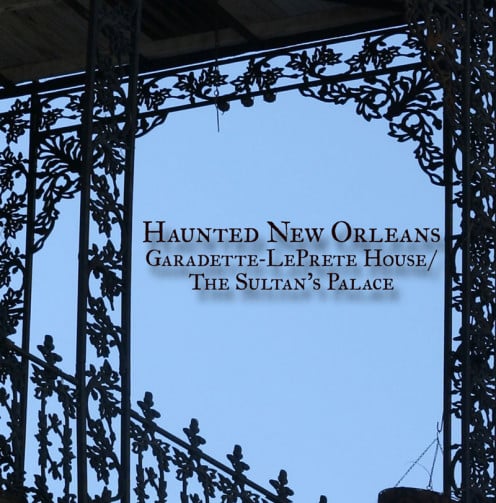
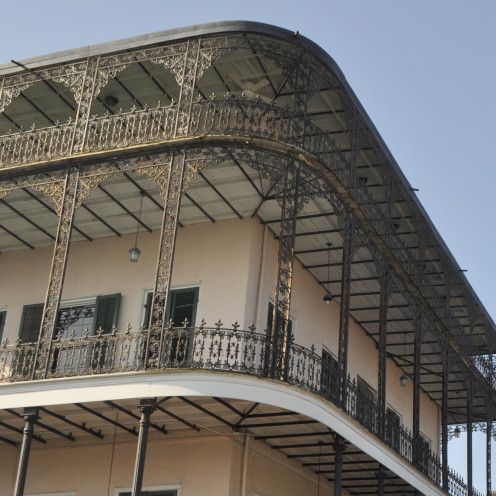
The Sultan's Palace
With its distinctive ironwork and gristly history, this was an excellent place to start an ongoing series about New Orleans' haunted sites.
These will be more than the stories that are passed on like a game of telephone- they'll be researched as much the documentation allows, and I'll leave the conclusions up to you!
When this research turns up interesting tidbits that not directly related to the famous story I'll include it under the "Lagniappe" heading at the bottom of the page.

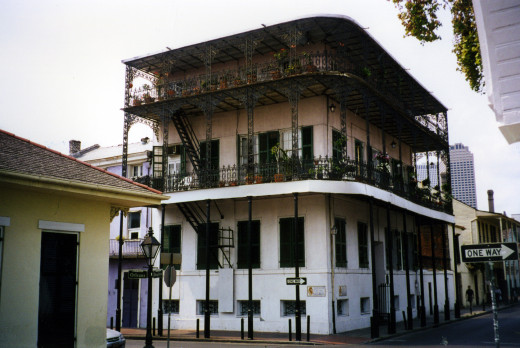
Origins of the house and tenants
The house was built in 1836 by Joseph Coulon Gardette and sold in 1839 to Jean Baptist Le Prete*. The tallest building in the vicinity at that time, it was built perfectly square with floor-to-ceiling windows that could all be opened to let the breezes through and access the wide balconies that circled his home.
Le Prete furnished the house lavishly, with massive crystal chandeliers and the very best furniture. He was known for his amazing parties and inside connections- in fact powerful friends founded Citizens Bank of New Orleans in his parlor.
After the Civil War Le Prete's fortunes had floundered and he'd retreated to his plantation, trying to keep one step ahead of the very bank his friends had founded. They held the mortgage and despite their connections, they were looking to foreclose.
And so it happened that Le Prete was all too eager to take up the offer of a mysterious stranger offering to broker a deal to rent the house to the brother of a Sultan. Not only would that bring in income, but such a prestigious tenant would be face saving.
*Some sources have his name as Laprete.
Balcony ironwork
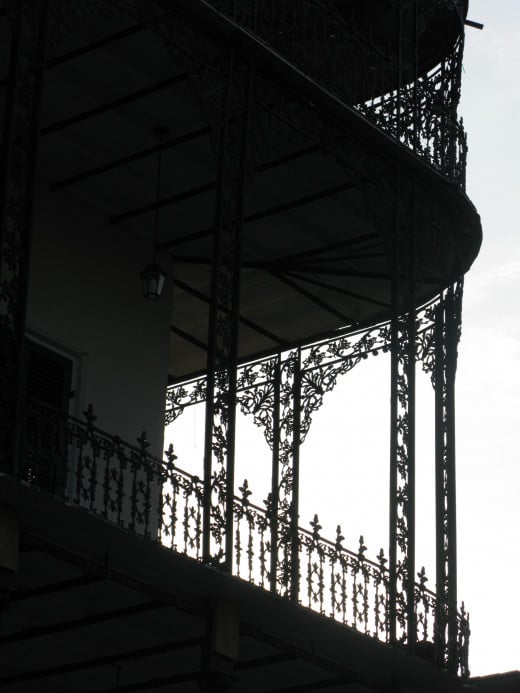
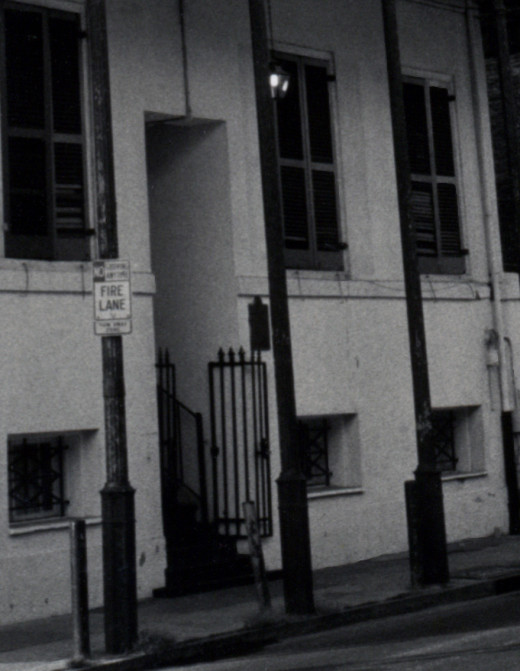
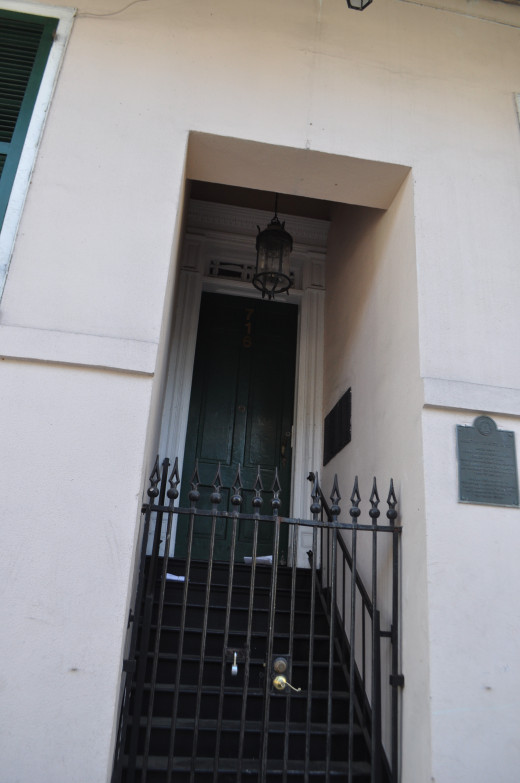
The Sultan & His Harem Arrive.
A procession from the docks soon followed- women, men, eunuchs, huge trunks, tapestries and more all went into the house, the door firmly closed behind them. The airy balconies were soon locked up. Heavy draperies were hung on every window, and men armed with scimitars patrolled the balconies day and night.
The man who'd been billed as the Sultan's brother announced he was in fact the Sultan himself. Gossip started immediately, of course, the size of his riches and harem both growing with each telling.
Invitations to his parties were scarce and much desired. It quickly became a friend-of-a-friend game: "No, I haven't been inside, but my cousin Mary's friend Anne was, and she said..."
There were stories of exotic foods, decorations that put Le Prete's to shame. And of course there were whispers of the sort of sexual shenanigans that sound a lot more like wishful thinking than actual fact.
All of that ended one early morning when a neighbor passing by saw blood seeping out from under the door, slowly dripping down the steps.


The police knocked in the door and found dozens of dead bodies- they’d been hacked into so many pieces an accurate count was impossible- and no one near had heard a thing, aside from what they thought was a particularly raucous party.
After much searching the Sultan himself was found in the small garden, having had his throat slit and buried even before he'd bled out, dying in excruciating pain.
But why?
No one was ever charged with the crime, but there are two main theories-
- Pirates/ thieves after his riches…though it seems unlikely they could’ve found a way inside the house without a cry being raised.
- The Turk’s brother- aka the “real” Sultan. The historical record shows there was a power struggle back East around that time and the ruler’s brother disappeared with a good deal of the family fortune (and several of his wives, for good measure). One can assume that didn’t go over too well, and that the Sultan also would’ve had the resources to take care of the problem.
But no one really knows, of course.
Citizens Bank did foreclose sometime shortly thereafter, and it sat vacant for some years afterward. In 1922 it was featured in the newspaper as being a derelict property in need of care, stating:
...time has left its scars on those high flung walls and though the interior has lost much of its plaster and every vestige of paint, the building as a whole is in fairly well preserved condition, but only gives the slightest hint of its former glory.
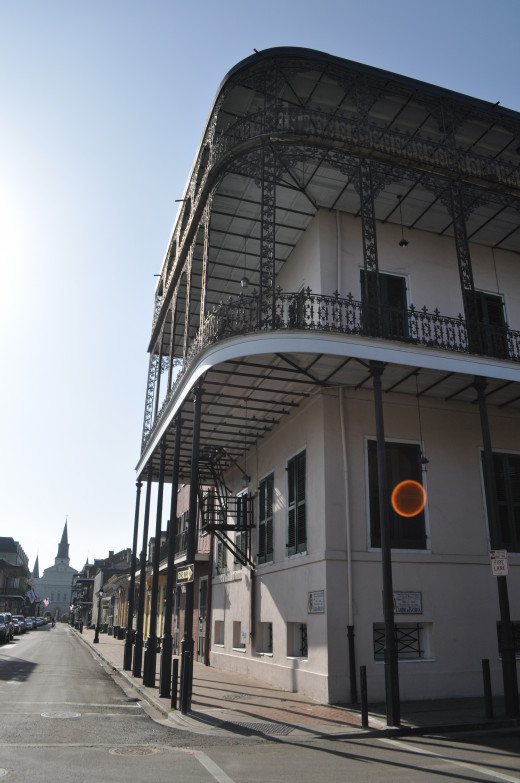
The Legend Spreads
Aside from a brief period of activity when the WPA rented it (see below), the house sank back into disrepair, unable to keep tenants or owners for long.
Neighbors spoke of screams in the night, of the strong scent of incense wafting from the house, and visions of the "Sultan" himself walking the galleries and peeping out the windows. People crossed the street to avoid being too near the place.
By the 1950s it had been again purchased and broken into 8 apartments, rented out cheap to broke French Quarter performers and artists.One of these spoke with the Times Picayune in 1979, when the newspaper did a story about the renovations going on:
"I didn't know about the legend, or even that the place was supposed to be haunted," recalled Virgie Posten.
"...I have never said anything much about this before, since I was afraid people would think I was some kind of kook or just looking for publicity," she confessed, "yet the truth is I moved out of that place a few months afterwards because I saw a man in my apartment on two different occasions and could never really explain how he could have gotten in or out of there so quickly without a sound.
"My two-room apartment had only one door, which opened into the main hall only a few yards from the foot of the enormous central staircase that wound its ways up to the floors above. I always kept it locked, and even if whoever it was had a key, I think I would have at least heard it turning in the lock. Yet there was nothing. Only silence. One minute he was there...the next he was gone! He didn't seem hostile. he'd just stand there and look at me, but it was terribly eerie and nervewracking!"
It was only after she'd had enough, and gone to stay with a friend that things got scary:
My...last experience, however, was the most frightening of all,. That was the night my girlfriend and I stopped to get a few of my things, which I'd left there until I could move them out. We were standing in the dimly lit hallways in the empty house...when we suddenly heard a bloodcurdling scream come out of the inky blackness somewhere at the top of the staircase just a few feet from us! It was petrifying- a long shrill scream that ended in a horrible gurgle! We ran as if the devil himself were after us to the street door."
In 1966 the house was sold and a slow process of renovations began, with the new owners living in the penthouse and reporting similar experiences. All these years later they still live there.
Aside from that interview with the newspaper in '79, they've kept any activity private, shunning the spotlight, though the tour guides stop in front of their house every night to tell the tale of the Sultan's Retreat.
Just a personal note...
I got the very rare chance to go into those apartments about a decade ago. I was standing out front, looking up at the ironwork, and a man with bags of groceries came up beside me, trying to figure out what I could find so interesting.
“It’s a dump, you know,” he said, shrugging.
“Maybe,” I said, “but it’s a dump with a hell of a history.”
It turned out he hadn’t heard the story, so he invited me in and I told him what happened here…and here… and there.
You know, I think he really wished he hadn’t stopped to talk to me after I’d told him.
heh heh heh...
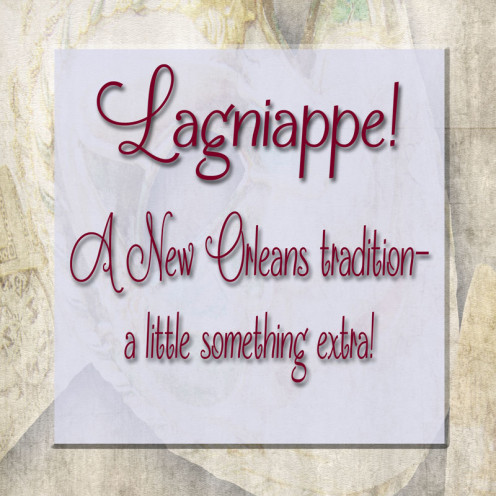
Click here to learn more about the rest of the history!
- New Orleans Garadette-Laprete House- a little extra history!
Garadette-Laprete is generally known as the "Sultan's Palace," where a horrific murder took place. Few know that it also was once a place where significant World War II art was produced.








